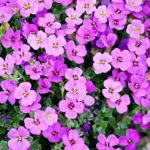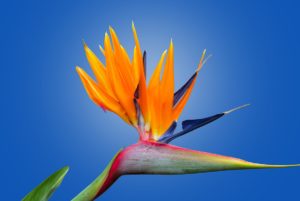Colors as They Relate to Nature
Understanding Colors as They Relate to Nature
Are your eyes the windows to your soul? Is nature nourishing your soul through your visual contact with her creations? Could there be a connection between the emotions you feel and the environment you immerse yourself in? Understanding color in nature and how you respond to it can be the springboard to creating uplifting, relaxing, exciting, and pleasurable outdoor experiences.
Most often, visual connections are your first encounter with nature. Why does color ignite your brain with excitement or calmness? Let’s begin by exploring the color wheel and how it’s organized.

The placement of the colors on the color wheel teaches the relationship of colors called “chromatic” relationships. Examining a few of these relationships will provide a greater understanding of why and how colors work together in nature and evoke certain responses in the brain.
Join me on this journey to increase our understanding of the impact color in nature has on us as human beings and how we can use this to improve and enrich our lives.
From Three Basic Colors All Other Colors in Nature are Created



Primary Colors –These are the basic colors nature has gifted to us from which all other colors are created. The primary colors are red, yellow and blue. White is the result of the reflection of all colors. Black is the result of the absorption of all colors.



Secondary Colors – Combining the three primary colors (red, yellow and blue) will create the secondary colors (orange, green and violet). Red mixed with yellow creates orange. Red mixed with blue creates violet. Yellow mixed with blue creates green.






Tertiary Colors – Mix a primary color and a secondary color to create a tertiary color. There are six tertiary colors – red-orange, yellow-orange, yellow-green, blue-green, blue-violet and red-violet.
Why Combination of Colors in Your Garden can Elicit Emotions
Because different colors can stimulate different emotions, it’s important to decide before creating or changing your surroundings how you want to feel when you’re in that space. Whether you’re redecorating the rooms in your home or changing the landscape that frames your home, understanding how colors work together can help you carefully select the colors to achieve the emotional response you want.



Complementary Colors – The colors opposite each other on the color wheel such as red and green, blue and orange, yellow and violet are known as complementary colors. When used together, these colors create a feeling of excitement and energy, and they can create a dramatic feeling in the garden. These colors can demand your visual attention. Use of these combinations can draw the eye to specific elements in the garden to make the statement you want to make. Other color combinations can be added to reduce the intensity.



Analogous Colors – These are colors positioned side-by-side on the color wheel. Choose any color on the wheel, then choose a color to the left and to the right of this color. This is an analogous color scheme. One color should be a dominant color in the landscape with the others supporting to avoid a visual wash out. This color combination elicits a feeling of harmony and calmness and is often found in nature in the color of flowers, the varying colors of yellow and green in grass, the changing color of the leaves on trees in the fall. This calming effect is perfectly manifested in a sunset.



Triadic Colors – To create a triadic color scheme in your garden, choose three colors equally spaced on the color wheel. The primary colors are triadic as well as the secondary colors, but any colors equally spaced create a triadic scheme. These colors tend to be vibrant and tend to have the same effect as the complementary colors. These energetic colors are often seen in the colors of tropical birds.
Keeping it Simple
There are many color schemes we could explore, but let’s keep it simple. The color schemes discussed above are sufficient to understand the importance of color to fill your visual sense in your garden.
Colors don’t always trigger the same emotional response for everyone. I love yellow. It’s my happy color. Yet I know people who don’t like yellow and completely avoid it in their garden. For some, blue brings a feeling of calm and to others a feeling of sadness.
To enjoy your garden to the fullest, it’s important that you understand what you want to feel in your garden and what colors elicit those feelings for you. Do you want to be energized when taking that leisure walk through your garden, or do you want to feel calm leaving the stress of the day behind? Maybe you want both. You may have an area in your garden that’s energizing, and another part of your garden may be your place of solitude where you can just relax and let the cares of your world escape from your mind.
What is the purpose of color combinations in the garden? When you see a red rose, there will likely be variations of red maybe even into a dark pink. But you still see red. Let’s use an analogous scheme for this example. Analogous colors to red are orange and violet. Let red be the dominant color and orange and violet be supporting colors or accent colors. Even though you will see variations of these colors in your plants and/or flowers, the overall color combination will still elicit a feeling of harmony and calmness.
Therefore, the purpose of using color combinations is to create the visual impact your garden has on you and the feelings created by this visual experience.
My Observation

No matter how we use her palette to create the environment we want, nature tempers our surroundings with calmness. Blue and green are the most dominant colors in nature.
With the enormous amount of blue sky and the massive vegetation that springs from the Earth, regardless of the picture we create, nature in her wisdom balances this for us. The green and blue framework adds an element of calmness to a stressful day, coolness to the hot summer sun, and a feeling of being refreshed and starting anew.
What are Your Color Emotions? Let’s Find Out!
Take a walk, and choose a day when you have uninterrupted time and go out into your garden, a nearby park, the mountains, or your favorite outdoor space. Be sure to take a notebook and pen. Walk leisurely through and practice visual awareness. Look closely at individual colors and notice how you feel. Also gaze across combinations of colors. Do they cause you to feel energized, excited, creative, calm, irritated, hungry (yes certain colors for some people cause a feeling of hungry), angry, anxious, sad, happy, optimistic?
As you discover your color emotions, write them down so you will remember the feelings you experienced with each color you visually took in. Once you understand your specific response to color, then include the colors that bring about the emotions you want to experience in your garden, and use this as a guide for your color selections. This works for the rooms in your home as well.
I would love to hear about your experience with color in nature. Please share in the comments below.